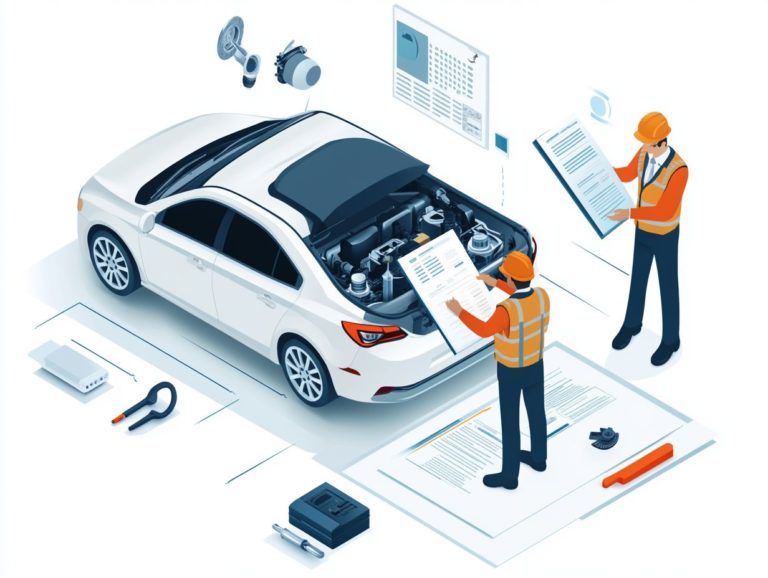Understanding Powertrain vs. Bumper-to-Bumper Warranty
When it comes to protecting your vehicle, understanding the subtleties of various warranties is essential. This guide explores powertrain and bumper-to-bumper warranties, outlining what each covers and their key differences.
It will assist you in identifying the warranty that best aligns with your needs while offering valuable tips for maximizing your coverage. Whether you’re a new car owner or simply looking to brush up on your knowledge, this information will empower you to make informed decisions.
Contents
- Key Takeaways:
- What is a Powertrain Warranty?
- What is a Bumper-to-Bumper Warranty?
- Key Differences between Powertrain and Bumper-to-Bumper Warranties
- Which Warranty is Right for You?
- Tips for Understanding and Utilizing Your Warranty
- Frequently Asked Questions
- Powertrain vs. Bumper-to-Bumper: What’s the Difference?
- Which Warranty Should I Choose When Purchasing a New Car?
- Can I Purchase a Powertrain Warranty and a Bumper-to-Bumper Warranty Together?
- Do Powertrain and Bumper-to-Bumper Warranties Cover Regular Maintenance and Wear-and-Tear?
- Is a Powertrain or Bumper-to-Bumper Warranty Transferable to a New Owner?
- How Long Do Powertrain and Bumper-to-Bumper Warranties Typically Last?
Key Takeaways:
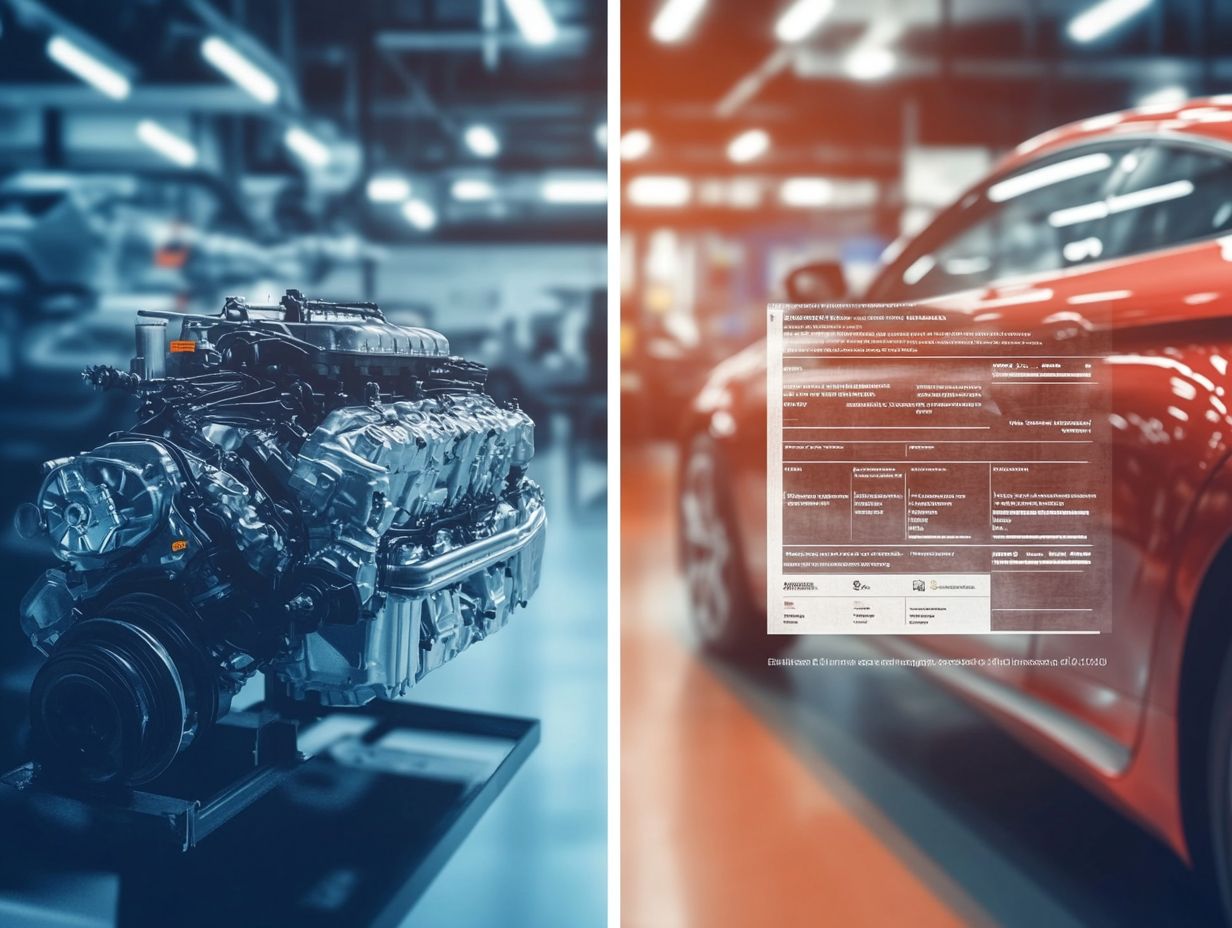
- A powertrain warranty covers essential parts like the engine, transmission, and drivetrain, while a bumper-to-bumper warranty covers almost all components except for wear and tear items.
- When deciding between a powertrain or bumper-to-bumper warranty, consider your driving habits, budget, and the type of vehicle you are purchasing.
- To make the most of your warranty, read and understand the coverage and limitations, stay up-to-date on maintenance, and avoid DIY repairs or modifications that may void the warranty.
What is a Powertrain Warranty?
A powertrain warranty is an essential element of vehicle ownership, protecting the key components that make your car move. This coverage provides peace of mind for owners of both new and certified pre-owned models.
Typically, it encompasses major components like the engine, transmission, and drivetrain, shielding you from the financial burden of unexpected repair costs that can arise from unforeseen failures.
Definition and Coverage
A powertrain warranty covers essential parts of your vehicle’s propulsion system, protecting you from the costs associated with failures of these critical systems.
Generally, powertrain warranties vary in coverage length, often lasting anywhere from five to ten years or based on a specific mileage limit. If you experience a mechanical failure within these covered components, the warranty covers the repairs or replacements for parts and labor, relieving you of the financial strain that unforeseen issues can cause.
What is a Bumper-to-Bumper Warranty?
A bumper-to-bumper warranty is your go-to vehicle protection plan, meticulously designed to cover nearly all components from the front to the rear bumpers. This safety net gives you confidence as a new vehicle owner.
With this coverage, you can rest assured that a wide array of vehicle systems and components is protected, ensuring that most repair costs are seamlessly managed by the manufacturer throughout the warranty period.
Definition and Coverage
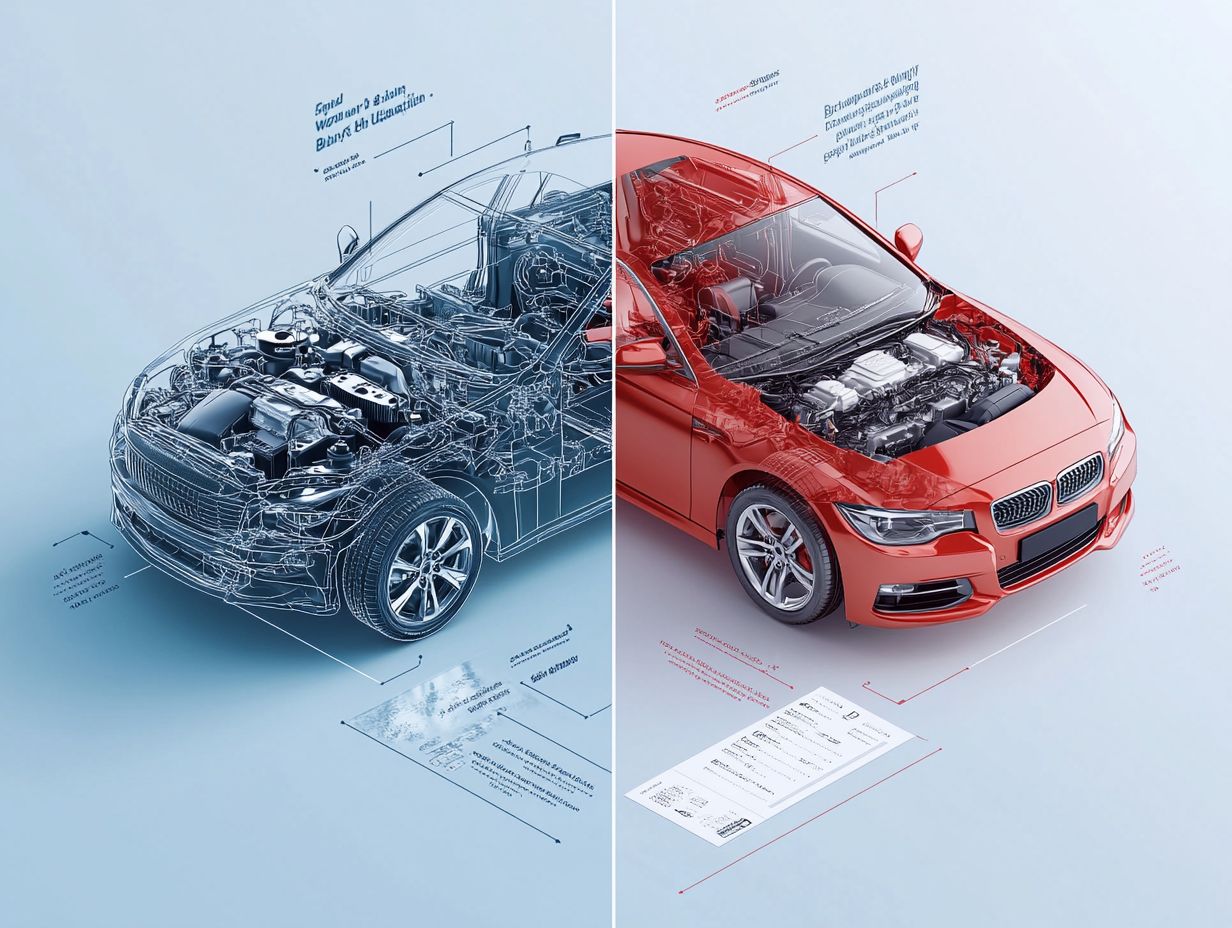
The bumper-to-bumper warranty offers you extensive coverage, safeguarding nearly all vehicle systems, including major components and electrical systems, against defects and failures.
This comprehensive warranty typically encompasses the engine, transmission, drivetrain, suspension, and various electrical systems vital for your vehicle’s operation. It often covers key elements such as air conditioning, heating systems, and even infotainment features, providing a robust safety net against unexpected repair costs.
Generally lasting between three to five years or reaching a specified mileage limit, it serves as a financial shield for you as a vehicle owner. By absorbing the costs of repairs for malfunctioning components, this warranty enables you to address any issues that arise without the weight of financial concern.
Wondering which warranty is right for you? Understanding these warranties now can save you money later! Consult your dealership for specific warranty options.
Key Differences between Powertrain and Bumper-to-Bumper Warranties
Understanding the key differences between powertrain and bumper-to-bumper warranties is crucial for you as a car shopper. For more detailed information, it’s helpful to know what to know about powertrain warranties, as these warranty types offer varying levels of protection for different vehicle components and systems.
A powertrain warranty focuses on the engine, transmission, and major drivetrain components (the parts that deliver power to the wheels). It provides coverage for the essentials that keep your vehicle running smoothly. In contrast, a bumper-to-bumper warranty covers more areas, offering a comprehensive safety net that encompasses most vehicle systems and components.
This knowledge helps you choose the right warranty with confidence.
Coverage and Limitations
The scope and limitations of powertrain and bumper-to-bumper warranties can vary greatly, influencing the extent of repair coverage you receive as a car owner.
Powertrain warranties generally cover vital components like the engine, transmission, and drivetrain, giving you peace of mind for major repairs during the warranty period. On the other hand, bumper-to-bumper warranties provide more extensive protection but often include limitations and exclusions, such as wear and tear items and certain electronic components.
Understanding these distinctions is crucial since powertrain coverage typically lasts longer often up to 10 years or 100,000 miles while bumper-to-bumper coverage usually has a shorter duration.
As a prospective buyer, it s vital to grasp the nuances of each option. Choosing the right warranty can significantly impact your long-term vehicle maintenance costs and overall ownership experience.
Which Warranty is Right for You?
Selecting the ideal warranty for your vehicle requires thoughtful reflection on the diverse range of consumer choices and warranty options available, particularly for new and certified pre-owned models.
Considerations such as the type of vehicle you own, the brand’s reputation whether it s a luxury label or a more mainstream option and your personal car shopping priorities can profoundly shape your decision-making process.
Factors to Consider
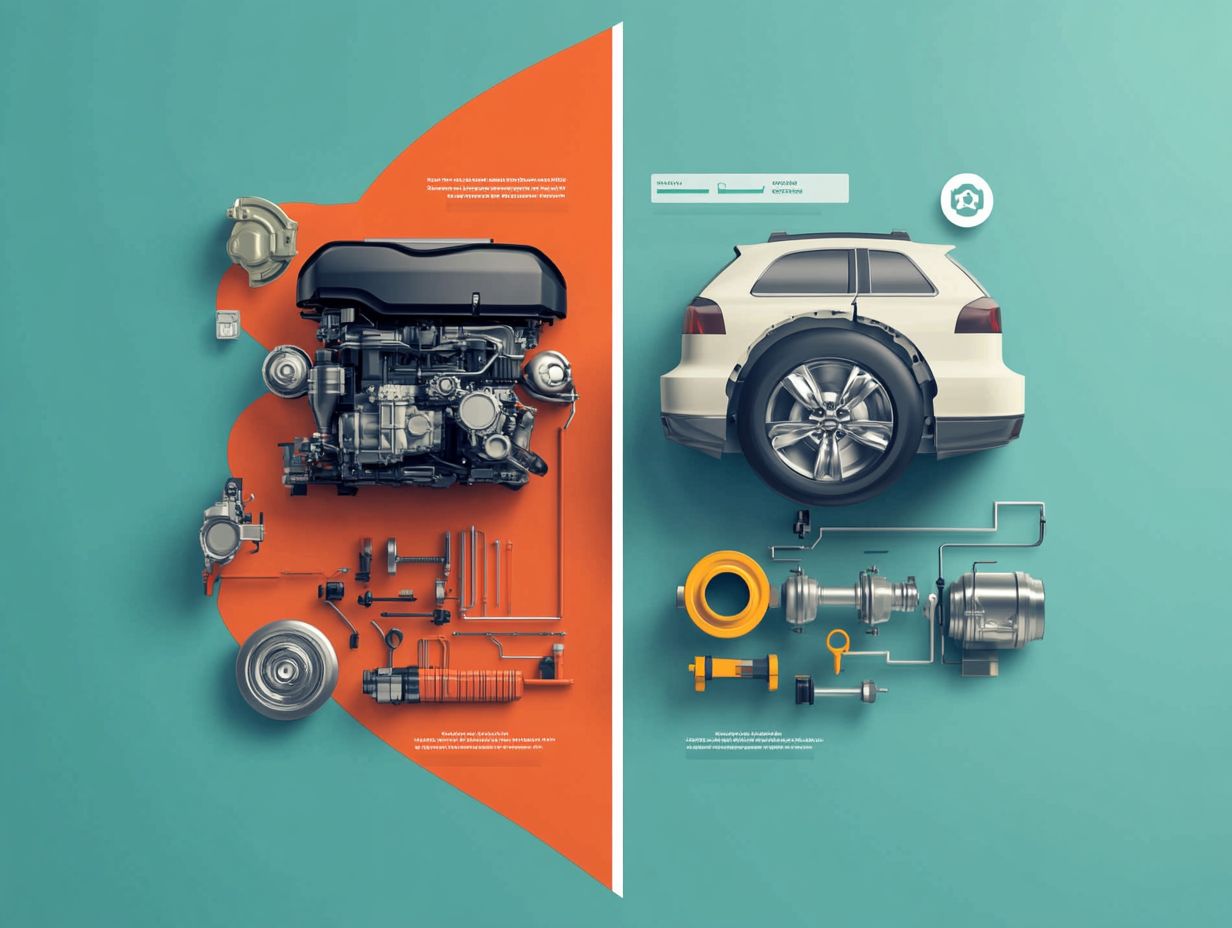
When considering the right warranty for you, it s essential to weigh several factors, including average repair costs, warranty options, and the potential perks of an extended warranty.
Start by researching the average repair costs for your vehicle s key components, as these can vary widely depending on the make and model. This knowledge is invaluable for assessing whether a warranty truly offers value for your investment.
Next, look closely at the types of warranty services available to you. Options like roadside assistance or rental car coverage can greatly enhance your ownership experience, making your driving journey much more enjoyable.
Evaluating the pros and cons of extended warranties is essential. While they can provide peace of mind against unexpected repairs, be mindful of their limitations, which may include exclusions or higher deductibles.
Grasping these details can profoundly impact not just your immediate expenses but also your long-term satisfaction with your vehicle.
Tips for Understanding and Utilizing Your Warranty
Understanding and effectively utilizing your warranty can lead to considerable savings and protect you against unexpected repair expenses. It’s crucial for vehicle owners like yourself to familiarize yourself with the warranty guidelines and details.
By thoroughly researching your warranty terms and learning how to maximize your coverage, you can ensure that you re fully benefiting from the protective measures your vehicle s warranty offers.
Don t miss out on the right coverage for your vehicle!
Maximizing Coverage and Avoiding Common Pitfalls
Maximizing your warranty coverage is important. Be aware of the common pitfalls that many vehicle owners encounter.
Knowing about warranty exclusions can help you avoid unexpected costs. Manufacturers often include specific conditions that could void your coverage if certain maintenance practices aren t followed.
Maintaining detailed records of your vehicle s service and repair history is crucial. This reinforces the validity of your warranty and ensures that you re covered when it matters most.
It s wise to navigate warranty services with confidence. Understanding the claims process and knowing the right channels to reach out for assistance can make all the difference.
Exploring various warranty options, such as extended warranties or specialized coverage plans, can provide enhanced protection. This gives you peace of mind and protects you from unexpected costs. Hit the road with confidence!
Frequently Asked Questions
Powertrain vs. Bumper-to-Bumper: What’s the Difference?
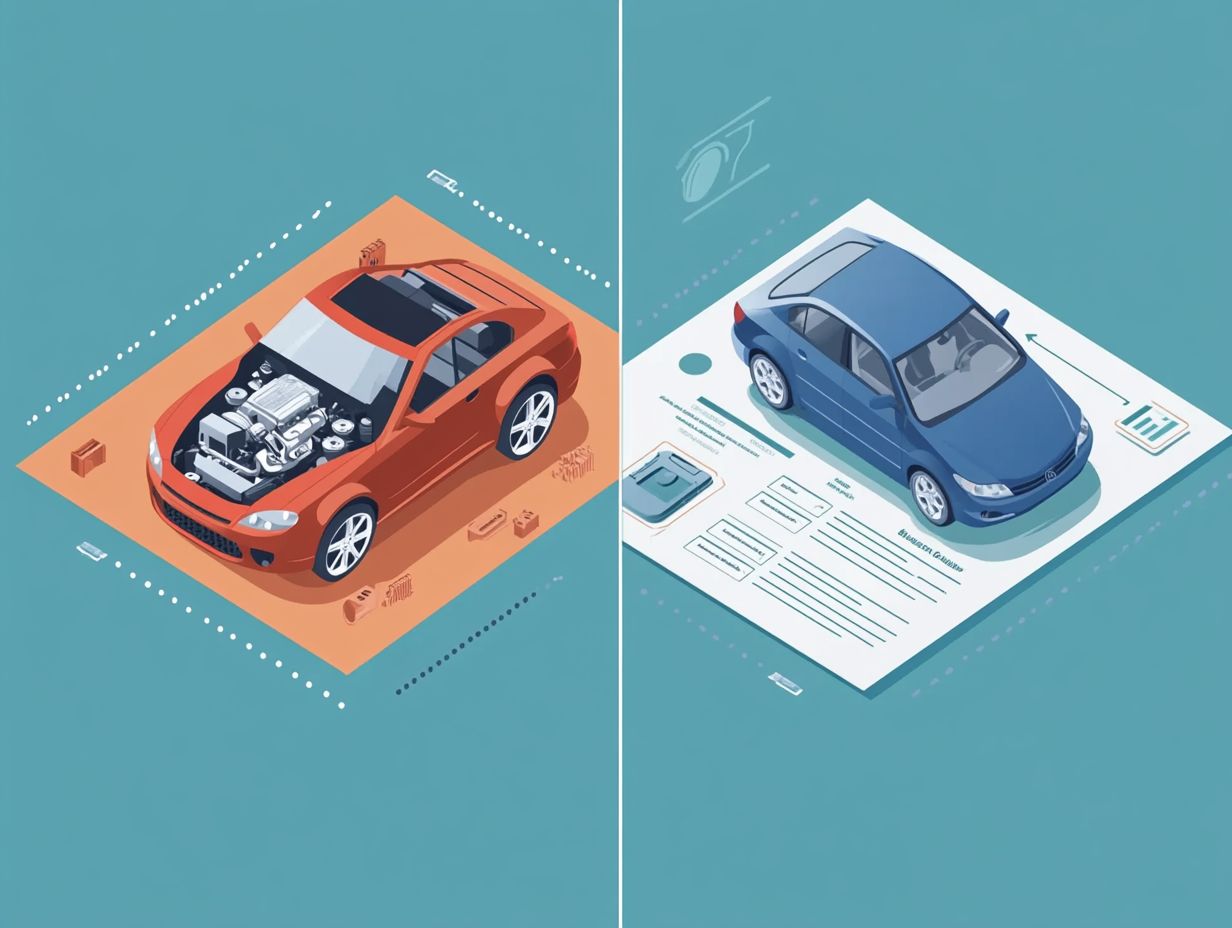
A powertrain warranty covers the major mechanical components of a vehicle’s powertrain, such as the engine, transmission, and drivetrain. A bumper-to-bumper warranty, on the other hand, covers almost all components of the vehicle, including electrical systems, suspension, and interior features.
Which Warranty Should I Choose When Purchasing a New Car?
It depends on your specific needs and budget. If you are looking for more comprehensive coverage, a bumper-to-bumper warranty may be the better option. However, if you prioritize coverage for major mechanical components, a powertrain warranty may be sufficient.
Can I Purchase a Powertrain Warranty and a Bumper-to-Bumper Warranty Together?
Yes, some car manufacturers offer the option to purchase both types of warranties for added coverage. However, this may come at an additional cost.
Do Powertrain and Bumper-to-Bumper Warranties Cover Regular Maintenance and Wear-and-Tear?
No, these warranties typically only cover defects and failures due to manufacturer errors. Normal wear-and-tear or regular maintenance, such as oil changes and tire rotations, are not covered.
Is a Powertrain or Bumper-to-Bumper Warranty Transferable to a New Owner?
It depends on the specific warranty and manufacturer. Some warranties may be transferable, while others may only apply to the original owner of the vehicle. It is important to check the terms and conditions of your warranty for transferability.
How Long Do Powertrain and Bumper-to-Bumper Warranties Typically Last?
The length of these warranties can vary depending on the manufacturer and type of warranty. Generally, powertrain warranties have longer coverage periods, ranging from 5 to 10 years, while bumper-to-bumper warranties typically last for 3 to 5 years.
Explore your warranty options today to find the best coverage for your vehicle!


